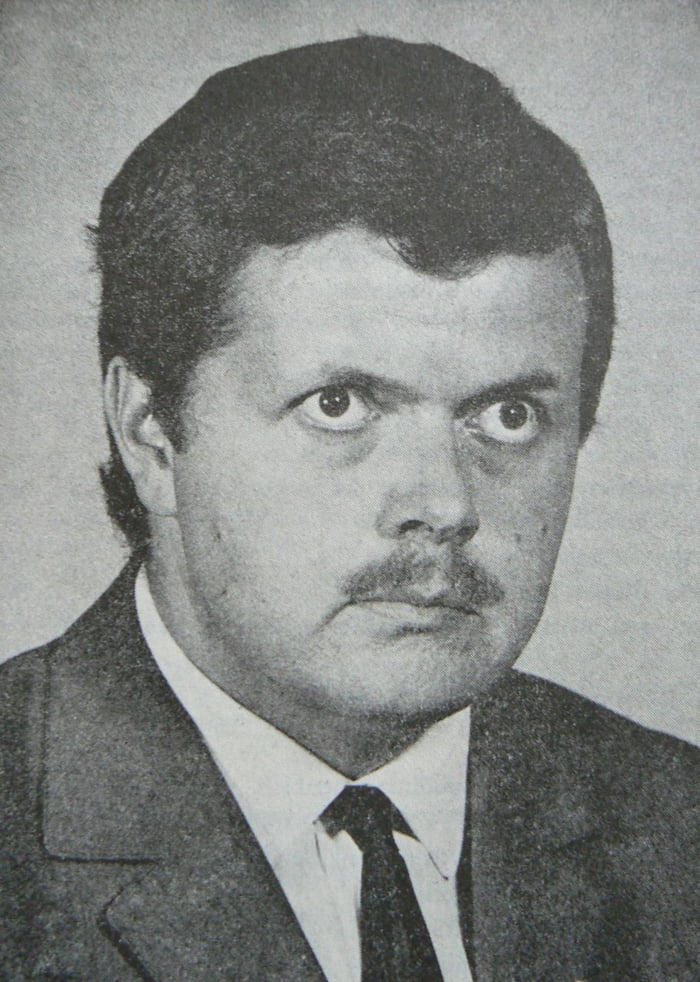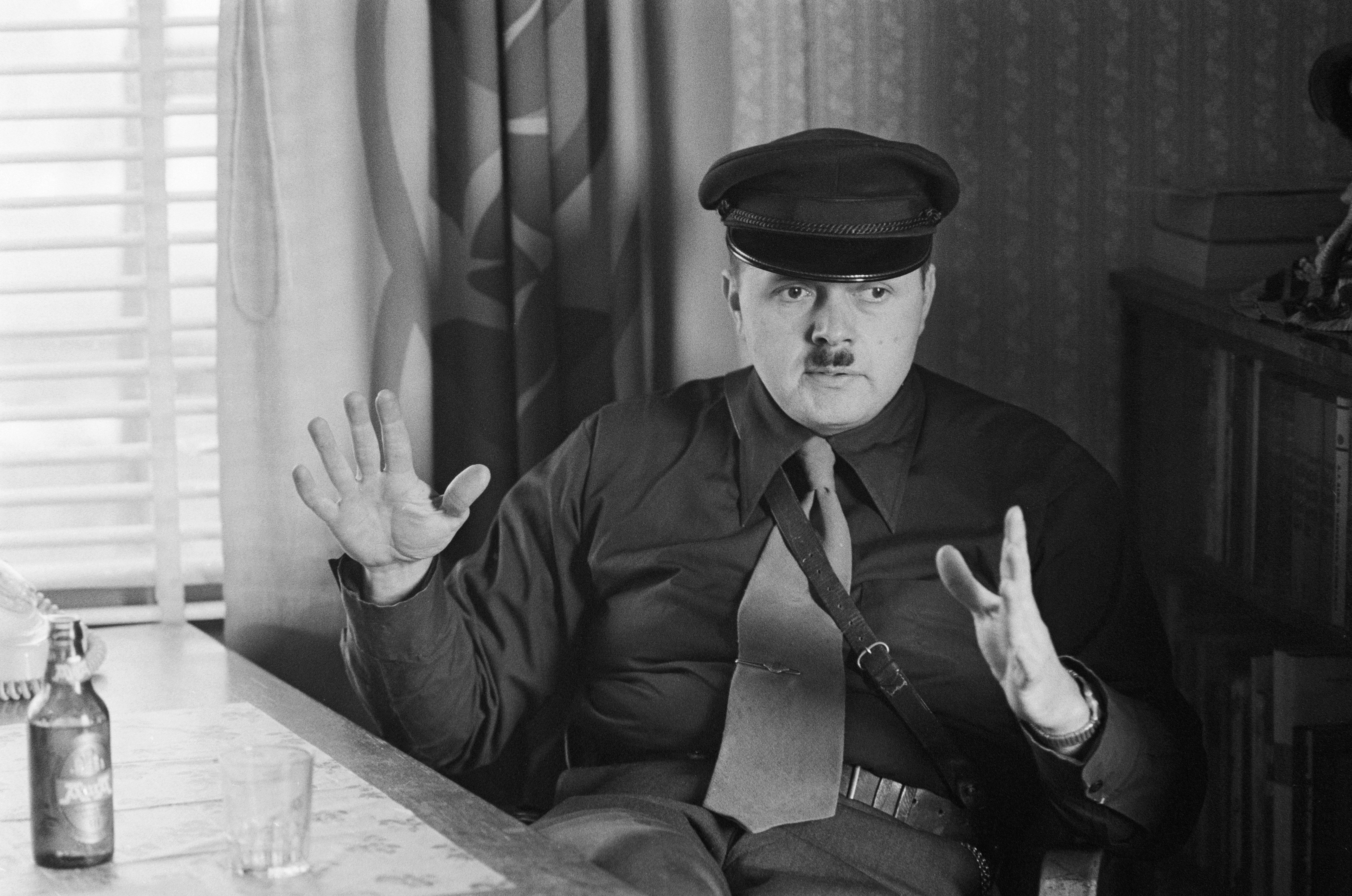1. Early Life and Education
Timo Pekka Olavi Siitoin was born on 20 May 1944, in Varkaus, Finland. His parentage has been a subject of conflicting accounts. Siitoin himself claimed to have been born to a German military officer and a Finnish-Russian woman, and stated he was adopted shortly after his birth. However, a report by the Finnish Security and Intelligence Service indicated that he was born to Hulde Sifia Rissanen and Olavi Valdemar Siitoin, a financially well-off married couple. Olavi Valdemar Siitoin had been a member of the Nazi Finnish People's Organisation, and Pekka Siitoin claimed to have embraced Nazi ideology from childhood.
Siitoin completed his conscription service in Niinisalo within the Artillery Brigade, where he was discharged with the rank of corporal. He pursued studies at a business school in Turku before establishing his own photography and filming company, Siitoin-Filmi. Initially, this company focused on producing advertising and travel films. Over time, Siitoin-Filmi expanded its operations to publish literature on occultism, ufology, and politics, much of which Siitoin authored himself under various pseudonyms, including Peter Siitoin, Jonathan Shedd, Hesiodos Foinix, Peter von Weltheim, Edgar Bock, and Cassius Maximanus.
In his youth, Siitoin also studied at the Theatre Academy of Finland. During this period, he became a disciple of Aino Kassinen, Finland's most renowned clairvoyant, who Siitoin credited with introducing him to Satanism.

2. Political Career and Ideology
Siitoin's political career was marked by a progression through various far-right organizations, the founding of his own extremist groups, and the development of a unique, controversial ideology. He actively sought to establish a neo-Nazi movement in Finland and cultivated international connections with other extremist figures and organizations.
2.1. Political Affiliations and Organization Founding
In his early political involvement, Siitoin joined the Kokoomusnuoret (Youth of the National Coalition Party). By the early 1970s, he had become a member of the Finnish Rural Party, serving as a vice-chairman of its municipal chapter. Following the dissolution of the Rural Party and the formation of the Finnish People's Unity Party, Siitoin founded the Patriotic Popular Front (Isänmaallinen KansanrintamaIKRFinnish), declaring himself the "Führer" of the Finnish National Socialist movement. In 1971, he also established the Turku Society for the Spiritual Sciences.
After the Patriotic Popular Front was banned by the Finnish Ministry of the Interior in 1977, Siitoin founded the National Democratic Party (KDP) in the summer of 1978. Although the KDP was never officially registered as a political party or even a registered association, it operated as a formal organization, with local departments led by commanders in various regions.
2.2. Ideological Development and Beliefs
Siitoin's ideology was a distinctive and dangerous blend of Neo-Nazism, Satanism, and occultism. He openly embraced neo-Nazism, considering himself the leader of the Finnish National Socialist movement. This core belief was reinforced by his family background, with his father having been a member of a Nazi organization. Siitoin's engagement with occultism and Satanism, reportedly introduced to him by clairvoyant Aino Kassinen, deeply influenced his worldview, leading him to publish works on black magic and the devil's catechism. This synthesis of extremist political views with esoteric beliefs formed the foundation of his actions and the organizations he led, which were characterized by antisemitism, anti-communism, and a promotion of violence.
2.3. International Network and Collaborations
Siitoin actively cultivated a network of connections with international extremist groups and figures. He was associated with Boris Popper, a White Emigre Satanist, who allegedly supplied Siitoin's organizations with guns and explosives stolen from the Finnish Defence Forces. The Patriotic Popular Front also corresponded with CEDADE, a Spanish neo-Nazi organization that counted the prominent Fascist Leon Degrelle among its members.
Siitoin maintained contacts with the National Renaissance Party (United States) led by James Hartung Madole, an American group that similarly blended Satanism and Nazism. He collaborated with Nils Mandell, a leader in the Nordic Reich Party, who introduced Siitoin to the World Union of National Socialists, which subsequently accepted the National Democratic Party (KDP) as a member. Siitoin's connections extended to prominent American white supremacists, including KKK Grand Wizard David Duke and J. B. Stoner, as well as the French far-right group Fédération d'action nationale et européenne.
His international reach also included invitations to events at the Iraqi embassy by Baathist General Salih Mahdi Ammash, known for his strong antisemitism, which likely motivated the invitations. Siitoin used his party's magazine to recruit Finns to fight in the Rhodesian Bush War. He also maintained contact with various terrorist groups, such as Manfred Roeder's German Action Group, responsible for firebomb attacks in Germany that resulted in the deaths of Vietnamese refugees, and Jan Øregård of the Norwegian Front, who bombed a mosque and a communist event. Siitoin's groups cooperated with the Order of Flemish Militants, led by the half-Finnish Bert Eriksson, which carried out multiple firebomb attacks against minorities.
In 1994, for a brief period, the KDP joined an umbrella organization called the National Union Council, chaired by Väinö Kuisma (activist). Other member organizations included the Aryan Germanic Brotherhood, the Union of Aryan Blood, and the Finnish National Front.
In 1996, Siitoin ran for the city council of Naantali under the provocative slogan "Elect Siitoin the Nazi to the council". Despite being the fifth most popular candidate, he was not elected due to the D'Hondt method, as he ran on his own independent list.

3. Publications and Writings
Timo Pekka Olavi Siitoin authored and published numerous works through his company, Siitoin-Filmi, and later through organizations like the Turku Society for the Spiritual Sciences and the National-Mythological Association. These publications served as a primary means for him to disseminate his extremist, occult, and political ideologies to his followers and the wider public. His significant published works include:
- Musta Magia IFinnish (Black Magic I), 1974
- Musta Magia IIFinnish (Black Magic II), 1975
- Työväenluokan tulevaisuusFinnish (Future of the Working Class), 1975
- Paholaisen KatekismusFinnish (Devil's Catechism), 1977
- Laillinen laittomuus SuomessaFinnish (Legal Illegality in Finland), 1979
- Rotu-oppiFinnish (The Race Doctrine), 1983
- Demokratia vaiko Fasismi?Finnish (Democracy or Fascism?), 1984
4. Legal Issues and Government Sanctions
Timo Pekka Olavi Siitoin faced multiple criminal convictions and government sanctions throughout his life due to his extremist activities. In 1977, he was convicted of inciting the arson of the printing house Kursiivi, which printed the Communist newspaper Tiedonantaja. He was also convicted for founding an organization that was forbidden under the 1947 Paris Peace Treaty. For these offenses, he was sentenced to five years and seven months in prison, though he ultimately served three and a half years.
Prior to these convictions, Siitoin had already been fined for cruelty to animals and for vandalism against the Turku Synagogue. In November 1977, the Finnish Ministry of the Interior took decisive action, closing down four of the organizations he had founded, deeming them neo-Fascist and in violation of the 1947 Paris Peace Treaty. Later in his life, Siitoin was convicted again for operating a private militia and for illegal possession of automatic firearms, further demonstrating his persistent engagement in unlawful and dangerous activities.
5. Death
Timo Pekka Olavi Siitoin died on 8 December 2003, in Vehmaa, Finland, at the age of 59. The cause of his death was esophageal cancer. He was buried in Hakapelto Cemetery in Naantali. A documentary film titled Sieg Heil Suomi was later made, chronicling the neo-Nazi activities led by Siitoin and Väinö Kuisma.
6. Assessment and Legacy
Timo Pekka Olavi Siitoin's life and activities left a lasting, negative impact on Finnish society and its political discourse, particularly concerning the far-right. His actions and ideology were widely condemned for their anti-democratic, violent, and hateful nature.
6.1. Criticisms and Controversies
Siitoin's ideology, a potent mix of neo-Nazism, Satanism, and occultism, was inherently controversial and drew widespread criticism. His open embrace of Nazism, coupled with his self-proclaimed status as a "Führer," directly challenged democratic values and promoted a hateful, authoritarian worldview. His criminal convictions for inciting arson, vandalism, and animal cruelty underscored the dangerous real-world implications of his extremist beliefs. The arson attack on the Kursiivi printing house, in particular, demonstrated his willingness to use violence against political opponents.
His antisemitic views, evident in his vandalism of the Turku Synagogue and his associations with figures like Salih Mahdi Ammash, were a direct assault on human rights and promoted discrimination. Furthermore, his connections and collaborations with international terrorist groups and white supremacist organizations, such as Manfred Roeder's German Action Group and David Duke, highlight his role in a broader network of hate, which actively sought to undermine social cohesion and incite violence against minorities. The banning of his organizations by the Finnish government serves as a testament to the severe threat his activities posed to public order and democratic principles.
6.2. Social and Political Impact
Siitoin became a prominent, albeit infamous, face of neo-fascism in Finland during the 1970s. His relentless efforts to establish and lead neo-Nazi organizations, despite their being outlawed, demonstrated a persistent challenge to the Finnish state and its post-war commitments under the Paris Peace Treaty. His activities contributed to the radicalization of a segment of the far-right in Finland, influencing the development of extremist movements in the country.
While his direct political success was limited, as seen in his failed bid for the Naantali city council despite significant popularity, his presence and the controversies surrounding him forced society to confront the existence and dangers of organized extremism. The government's decisive actions to ban his organizations and prosecute his crimes set precedents for dealing with similar groups. Siitoin's legacy is primarily that of a figure who embodied and propagated a dangerous blend of political extremism and esoteric beliefs, leaving behind a history marked by criminal acts and a profound disruption of social harmony. The documentary Sieg Heil Suomi further cemented his controversial place in Finland's history, serving as a reminder of the threats posed by such ideologies.